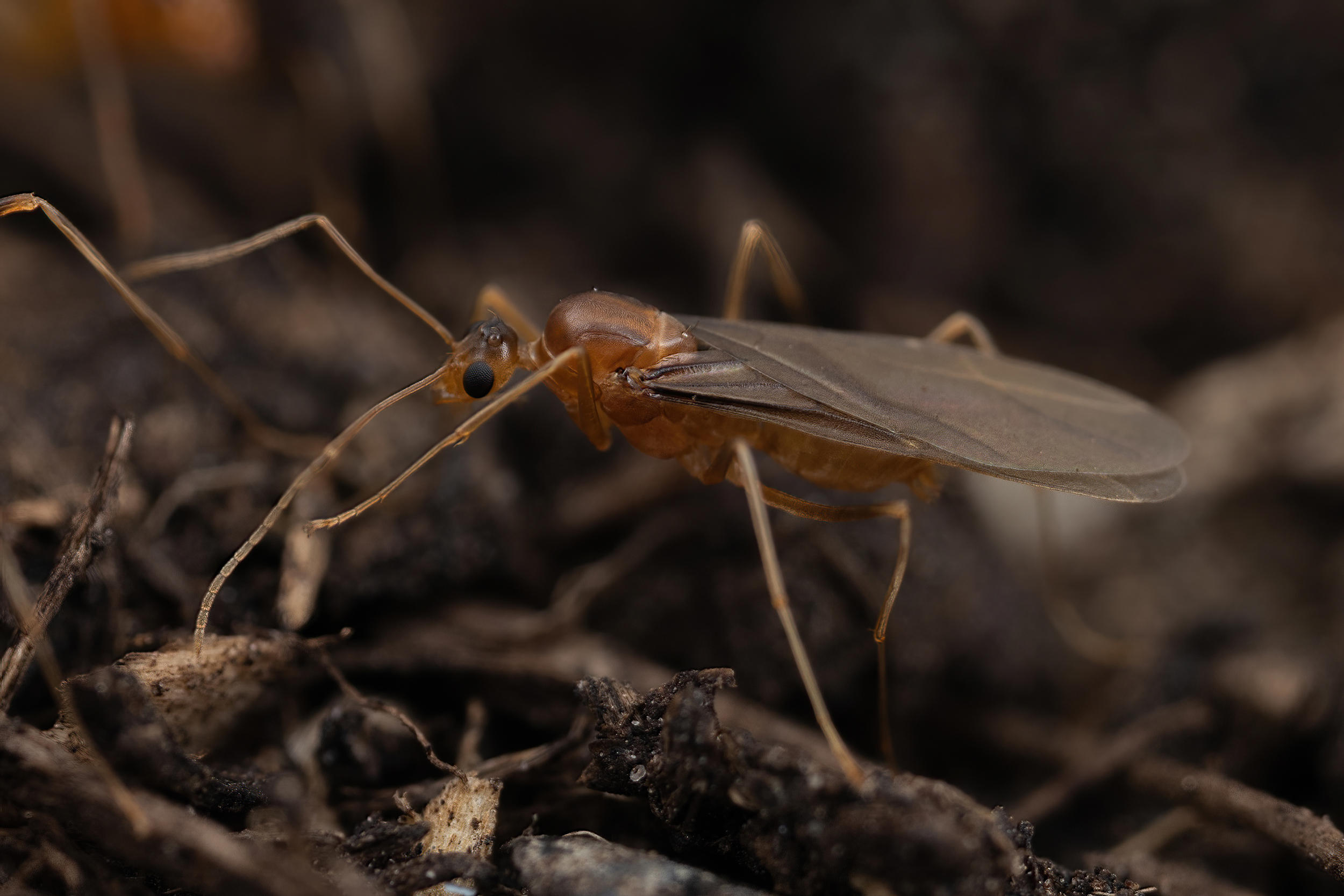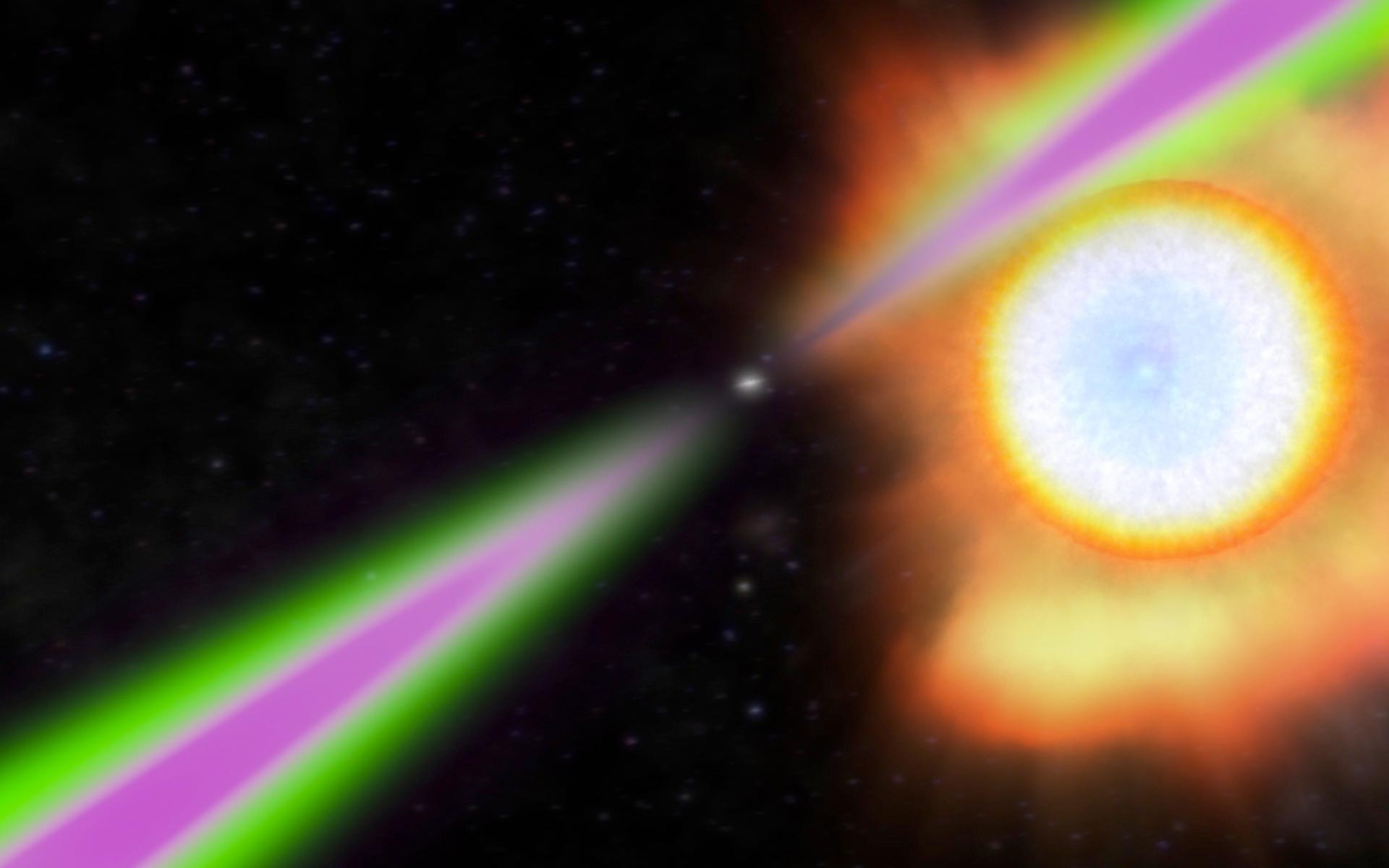
Investigadores internacionales están estudiando la hormiga amarilla loca, o Anoplolepis gracilipesSe descubrió que las hormigas macho de esta especie son quimeras, que contienen dos genomas de diferentes células principales dentro de sus cuerpos. Este proceso reproductivo único, que surge de un solo óvulo fertilizado que se somete a una división nuclear separada para la madre y el padre, no tiene precedentes y desafía la ley biológica básica de la herencia de que todas las células de un individuo deben contener el mismo genoma. Crédito: Hugo Dres
Las hormigas locas amarillas macho muestran la característica única de tener dos genomas diferentes, cada uno ubicado en grupos celulares separados.
La hormiga loca amarilla, conocida científicamente como Anoplolepis gracilipesEs conocida por ser una de las enfermedades invasivas más devastadoras[{» attribute=»»>species globally. Despite this, an international team of researchers is not interested in its destructive capabilities. Their study, instead, is centered on its unique reproduction process, as the male counterparts of this ant species have long puzzled the scientific community.
“The results of previous genetic analyses of the yellow crazy ant have shown that the males of this species have two copies of each chromosome. This was highly unexpected, as males usually develop from unfertilized eggs in ants, bees, and wasps – and thus should only have one maternal copy of each chromosome,” explained Dr. Hugo Darras, Assistant Professor at Johannes Gutenberg University Mainz (JGU) and lead author of the corresponding article recently published in Science.
“With this in view, we decided to investigate this puzzling phenomenon with subsequent experiments.”

Two male yellow crazy ants (Anoplolepis gracilipes). Credit: Hugo Darras
Two genomes in different cell clusters
The results were quite extraordinary. It had been assumed to date that the males of the yellow crazy ant carried the same two sets of chromosomes in all cells of their body. However, the team was able to demonstrate that this premise was anything but correct.
“We discovered that the male ants have maternal and paternal genomes in different cells of their body and are thus chimeras. To put it another way, all males have two genomes, but each cell of their bodies contains only one or the other of the two genomes,” summarized Darras.
Normally, in a multicellular life form – be this a human, a dog, or a bat – all cells contain identical genetic material.

A longitudinal section of the brain of a chimeric male yellow crazy ant with maternal (pink) and paternal (blue) genomes in situ hybridization: The male tissue consists of large cell clusters carrying only maternal or paternal genomes. Credit: Hugo Darras
The research team concludes that male yellow crazy ants are chimeras: they develop from fertilized eggs in which the two parental gametes do not actually fuse. Instead, the maternal and paternal nuclei divide separately within the same egg, meaning that the resultant adult males have both parental DNA sequences but in different body cells.
When the gametes do fuse, either a queen or a worker develops from the egg, depending on the genetic information carried by the sperm. It is yet unknown what mechanisms determine whether fusion of the parental gametes takes place or not.
Chimerism and the yellow crazy ant: A mode of reproduction previously unknown to science
Chimeras are individuals whose cells contain different genetic materials. They naturally occur in certain species, such as corals and angler fish, in which separate individuals can merge to become one. Chimerism can also be found in humans and other placenta mammals. During gestation, mother and fetus can exchange a small number of cells so the offspring usually has a few cells that contain the same genetic material as the mother. Such small-scale exchanges also occur between twins in the womb.

A male yellow crazy ant (Anoplolepis gracilipes). Credit: Hugo Darras
“In contrast to these known cases, chimerism in the yellow crazy ant does not result from the fusion of two separate individuals or an exchange of cells between them. Instead, this process has its origin within a single fertilized egg. This is unique,” concluded Darras.
Hence, the development of the male yellow crazy ant appears to contravene one of the fundamental laws of biological inheritance in which all cells of an individual should contain the same genome.
Reference: “Obligate chimerism in male yellow crazy ants” by H. Darras, C. Berney, S. Hasin, J. Drescher, H. Feldhaar and L. Keller, 6 April 2023, Science.
DOI: 10.1126/science.adf0419

«Zombieaholic. Nerd general de Twitter. Analista. Gurú aficionado de la cultura pop. Fanático de la música».





